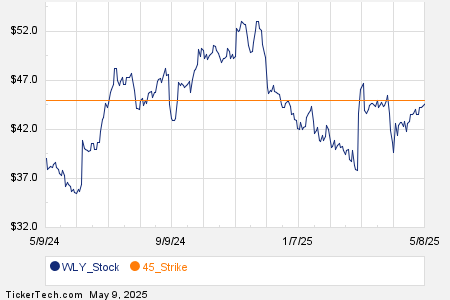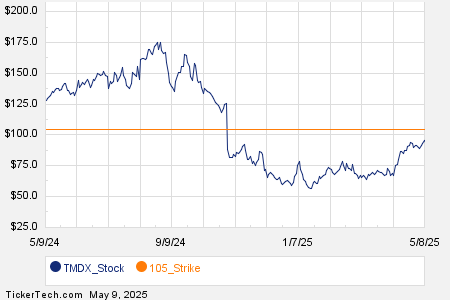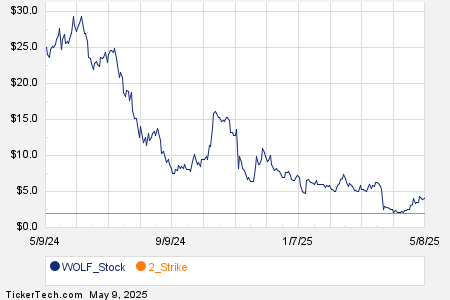# Top ETFs for Passive Income: Weathering Market Volatility
Selloffs can test the fortitude of even the most seasoned investors. While volatility is an inherent part of investing in the Stock market, there are strategies to lessen its effects.
Exchange-traded funds (ETFs) allow investors to gain exposure to numerous companies under a single ticker. Dividend-paying ETFs provide both diversification and passive income, helping investors navigate Stock market fluctuations with greater ease.
Where to invest $1,000 right now? Our analysts have identified the 10 best stocks you should consider. Continue »
Here are three standout funds to consider: the JPMorgan Equity Premium Income ETF (NYSEMKT: JEPI), the Vanguard Utilities ETF (NYSEMKT: VPU), and the Vanguard Energy ETF (NYSEMKT: VDE).

Image source: Getty Images.
JPMorgan Equity Premium Income ETF: Consistent Passive Income
Lee Samaha introduces the JPMorgan Equity Premium Income ETF: Investors are drawn to this ETF for its promise of low volatility returns and steady monthly income, regardless of market conditions. While it sacrifices some upside potential during bull markets, it provides both monthly income and downside protection when markets turn bearish.
Although this ETF delivered positive total returns and outperformed the S&P 500 (SNPINDEX: ^GSPC) until late March, a market drop in April has resulted in a decline for the year. However, it continues to show better performance compared to the S&P 500.
Several factors suggest that this is an opportune time to consider this ETF. Firstly, it trades at a slight discount to its net asset value. Moreover, it boasts a trailing dividend yield of nearly 7.5%, offering substantial income to investors. Lastly, its strategy of maintaining positive exposure via derivatives while investing in U.S. equities has consistently yielded monthly passive income. For those anticipating a flat or declining market this year, this ETF presents a compelling investment choice.
Vanguard Utilities Index ETF: A Steady Performer
Scott Levine examines the Vanguard Utilities Index Fund ETF: In a turbulent market, this ETF offers a comforting remedy for investors. It provides a reliable stream of passive income and includes electric utilities, which typically endure during economic uncertainty. With a 30-day SEC yield of 2.9% and a low expense ratio of 0.09%, it is an attractive option.
The fund primarily invests in electric utilities, which make up approximately 62% of its assets. Its top holdings include NextEra Energy, Southern Company, and Duke Energy, accounting for a combined 25.6% of the fund’s weighting.
Over the past year, the Vanguard Utilities Index Fund ETF has achieved a total return exceeding 26.6%, significantly outperforming the S&P 500’s return of 5.9%. While past performance does not guarantee future results, such numbers are indeed noteworthy for risk-averse investors.
Vanguard Energy ETF: Value and Income Potential
Daniel Foelber reviews the Vanguard Energy ETF: The energy sector was a strong performer early in 2025 but saw a significant pullback in April, making it the poorest performing sector that month, even worse than technology and consumer discretionary stocks.
A mixed outlook due to potential tariffs that could slow the economy has led to decreased oil and gas demand. Increased production from OPEC+ may further complicate supply and demand scenarios, contributing to the decline in energy stocks. However, this dip might present a valuable buying opportunity for long-term investors.
The Vanguard Energy ETF offers exposure to a range of high-yield oil and gas companies across upstream, midstream, and downstream sectors. Major integrated companies like ExxonMobil (NYSE: XOM) and Chevron (NYSE: CVX) represent 38% of the fund. The ETF also includes leading firms in exploration, midstream infrastructure, refining, and liquefied natural gas operations.
Notably, many oil and gas companies rely on dividends to share profits with their shareholders. Both ExxonMobil and Chevron have remarkable histories of consistently raising dividends, even amid industry downturns. ExxonMobil has raised its payout for 42 years straight, while Chevron has maintained its own impressive streak of 38 years.
However, not all companies in the sector maintain such reliability. This is where an ETF provides an added layer of protection against potential dividend cuts.
With an expense ratio of just 0.09%, the Vanguard Energy ETF presents a low-cost option for those entering the energy sector. Its price-to-earnings ratio stands at 13.3, accompanied by a yield of 3%, making it an appealing choice for value investors seeking passive income.
Is the JPMorgan Equity Premium Income ETF Right for You?
Before investing in the JPMorgan Equity Premium Income ETF, consider…
JPMorgan ETF Misses List of 10 Top Stocks for Investors
The Motley Fool Stock Advisor analyst team has identified what they consider to be the 10 best stocks for investors to buy now. Notably, the JPMorgan Equity Premium Income ETF did not make the list. Analysts believe the selected stocks could yield substantial returns in the upcoming years.
Consider Netflix, which was included on this list on December 17, 2004. If you had invested $1,000 at the time of that recommendation, you would now have $524,747! Similarly, Nvidia earned a spot on the list on April 15, 2005; a $1,000 investment from that time would have grown to $622,041!
It’s important to highlight that Stock Advisor boasts a total average return of 792%, significantly outperforming the S&P 500’s 153% return. Don’t miss the chance to explore the latest top 10 list by joining Stock Advisor.
*Stock Advisor returns as of April 14, 2025
JPMorgan Chase is an advertising partner of Motley Fool Money. Daniel Foelber has no position in any of the stocks mentioned. Lee Samaha has no position in any of the stocks mentioned. Scott Levine has no position in any of the stocks mentioned. The Motley Fool has positions in and recommends Cheniere Energy, Chevron, EOG Resources, JPMorgan Chase, Kinder Morgan, and NextEra Energy. The Motley Fool also recommends Duke Energy and Oneok. The Motley Fool has a disclosure policy.
The views and opinions expressed herein are those of the author and do not necessarily reflect those of Nasdaq, Inc.




